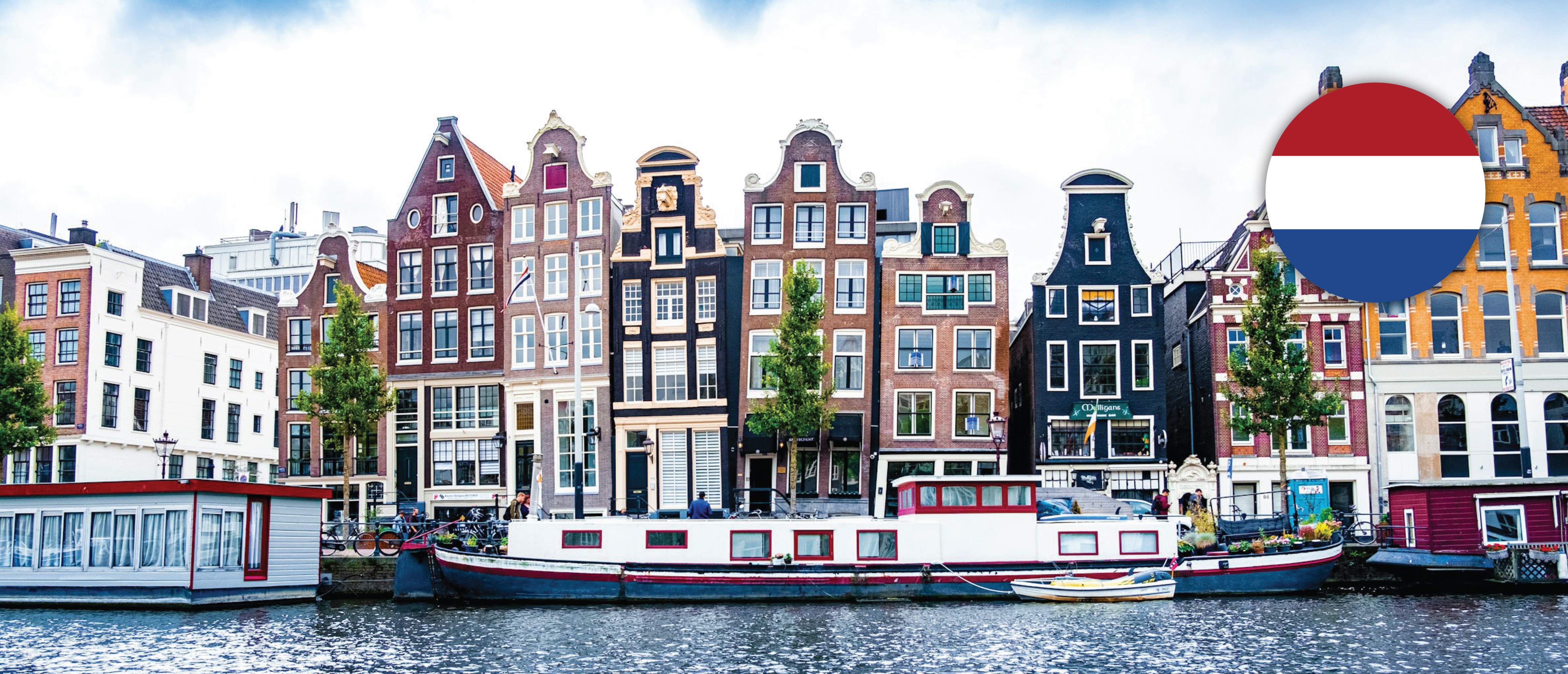General Information
Population
Immigration
Emigration
Working-age population
Unemployment rate
GDP
Migration Authorities
Responsible Body
Line Ministries
Agencies
Key Policy Documents
Description
The Netherlands is the sixth largest economy in Europe. In 2021, the Dutch population grew by 115.979 inhabitants reaching 17.6 million. As of 2015, the population growth stems mainly from immigration. 2.2 million people (14% of the country´s resident population) were born abroad. Of them, 1.6 million people originate from outside Europe with persons born in Turkey, Suriname and Morocco representing the three largest groups (201.000, 178.000 and 173.000 respectively). The Netherlands is also home to a relatively large group of migrants born in Asia (497.000). Additionally, 2 million residents (11,4% of the population) were born in the Netherlands to a migrant parent.
In 2021, 250.792 persons immigrated to the Netherlands, representing a 30.000 increase compared to 2020. The years 2020 and 2021 also saw particularly high number of naturalizations, which reached 50.870 and 55.930 respectively, increasing by some 50% compared to previous years. The nationals of Syria, Eritrea and India lodged the majority of naturalization requests.
The Netherlands experiences four main streams of immigration: asylum seeker and family reunification arrivals; intra-European Union migration; and longstanding migration from the Caribbean parts of the kingdom. Over 50% of immigrants come to the Netherlands from Europe, primarily from Poland, followed by Asia (20.9%), the Americas (10.7%) and Africa (7.3%). Some 7.6% have a Dutch background. In the first quarter of 2022, the immigration dynamic has changed showing an increase of migrants from the countries of the former Soviet Union, followed by Syrian, Turkish and Indian nationals. Meanwhile, Polish nationals occupied only fifth place.
In 2020, the prime reason for immigration among non-EU nationals was family reunification, followed by education, asylum and labour. Meanwhile, immigration from EU/EFTA was mainly driven by employment, family and other motives. A large share of immigrants remains in the Netherlands only temporarily. Over 70% of immigrants from EU/EFTA states and over 57% from non-EU/EFTA states leave the country in ten years.
Over the past years, the number of foreigners residing in the Netherlands without the right of residence has fallen substantially. According to a 2020 study conducted by Utrecht University, the number of aliens residing illegally in the period 2017-2018 was between 23.000 and 58.000.
When it comes to international protection, the number of asylum seekers in 2021 (incl. first and repeated asylum applications, and family reunification) amounted to 36.620, nearly doubling compared to 2019. The top four countries of origin of asylum seekers were Syria (14.904), Afghanistan (3.425 and 3.006), Turkey (3.215), and Yemen (1.855). Since Russia’s invasion of Ukraine and until the end of April 2022, Russian nationals lodged 151 asylum applications in the Netherlands. Russia became the top seventh country of first asylum applications. In February and March 2022, the Netherlands first removed Ukraine from the list of safe countries of origin and then granted temporary protection to Ukrainian nationals in line with the EU Temporary Protection Directive up to 4 March 2023. In the first quarter of 2022, almost 3 in 10 immigrants came to the Netherlands from Ukraine. Among Ukrainians who have registered in the Netherlands since 24 February, 37% are minors, 33% are adults of 25-45 years of age, and nearly 80% of all adult immigrants are women.
In 2021, 142.517 persons emigrated from the Netherlands, which is some 10.000 less compared to 2020. 90% of all emigrants that left the country in 2020 were first-generation migrants mostly originating from the EU. Most emigrants moved to Belgium, Germany, Spain and the UK. Around one-third were Dutch nationals departing for the country of birth of their parents, primarily for Turkey and Morocco. Some 80% of emigrants are up to 40 years of age. While the UK, Australia and Turkey represent popular destinations among emigrants in their twenties, people aged 65 and above very often choose Spain and France.
In 2020, due to the outbreak of COVID-19, the Netherland restricted the right to asylum. In March 2020, the Dutch Government suspended return interviews and placed asylum seekers in emergency shelters instead of reception centres. In November 2021, to tackle shortages in reception centres, the country introduced the so-called Hotel- and Accommodation Arrangement allowing status holders awaiting regular housing to be hosted in temporary accommodation at the municipality’s costs for six months. The municipality receives a payment (8280€ plus 1000€ for guidance) for every status holder that participates in this arrangement.
The new Integration Act, adopted by the House of Representatives in July 2020, came in force into January 2022. The Act aims to introduce, among others, a civic integration exam that contains a language exam at the B1 level; to improve the conditions of civic integration education, incl. measures to prevent overlap in migrants’ education and measures for analphabetic migrants. From September 2019 to September 2021, the Netherlands financed the IOM’s Voluntary Return and Reintegration Project aimed at facilitating voluntary return to Algeria, Egypt, Tunisia and Morocco, and supporting reintegration in the countries of origin.
The amendments of the Aliens Decree on the General Asylum Procedure (Track 4) entered into force in June 2021. The amendments formally provide rules for the registration/reporting procedure and relative interview that takes place before the start of the rest and preparation period, while cancelling the first interview during the Regular Asylum Procedure. By abolishing the first interview, the Regular Asylum Procedure takes place within six days instead of eight. However, several grounds such as medical reasons may extend the regular asylum procedure beyond six days.
